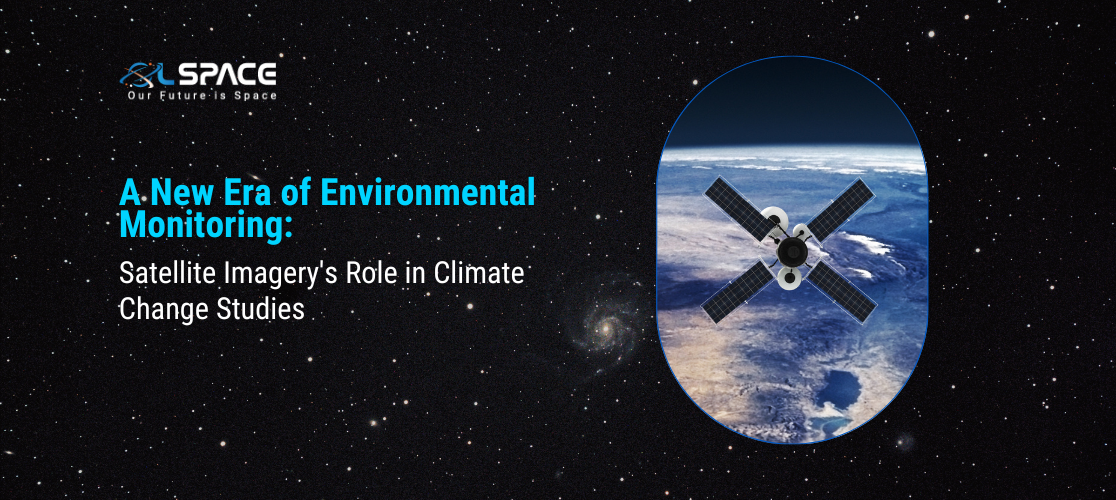21 May 2024
A New Era of Environmental Monitoring: Satellite Imagery’s Role in Climate Change Studies

Climate change is one of the most pressing challenges of our time, demanding robust and precise monitoring tools to understand its impacts and devise mitigation strategies. Satellite imagery has emerged as a revolutionary technology in environmental monitoring, providing unparalleled insights into the dynamics of our planet. This new era of satellite-based monitoring is transforming how we study and address climate change.
The Power of Satellite Imagery Satellite imagery offers a comprehensive, high-resolution view of the Earth’s surface, capturing changes over time with remarkable detail. This technology’s key advantages include:
Global Coverage: Satellites can monitor remote and inaccessible regions, ensuring no part of the planet is overlooked.
Temporal Consistency: Regular satellite passes provide continuous data, enabling the study of trends and changes over time.
Multispectral Imaging: Satellites capture data across various wavelengths, revealing information beyond what the human eye can see, such as vegetation health and atmospheric conditions.
Key Applications in Climate Change Studies
1. Deforestation and Land Use Change
Satellites play a critical role in monitoring deforestation, which contributes to carbon emissions and biodiversity loss. By analysing satellite images, scientists can track the rate of forest loss, identify illegal logging activities, and assess the effectiveness of conservation efforts.
2. Glacial and Ice Cap Melting
Satellite imagery provides detailed observations of glacial retreat and ice cap melting, key indicators of global warming. These observations help quantify the contributions of melting ice to sea level rise and understand the implications for coastal communities and ecosystems.
3. Sea Level Rise
Using satellite altimetry, scientists can measure sea level changes with high precision. This data is crucial for predicting the impacts of sea level rise on coastal infrastructure, habitats, and human populations.
4. Atmospheric Monitoring
Satellites equipped with spectrometers monitor greenhouse gas concentrations, aerosols, and other atmospheric components. This data is vital for understanding the sources and sinks of greenhouse gases and evaluating the effectiveness of emission reduction policies.
5. Disaster Response and Mitigation
During natural disasters such as hurricanes, floods, and wildfires, satellite imagery provides real-time data for emergency response and recovery efforts. It helps assess the extent of damage, monitor ongoing hazards, and plan effective interventions.
Advancements in Satellite Technology
Recent advancements in satellite technology are enhancing the capabilities of environmental monitoring:
Higher Resolution: Newer satellites offer finer spatial resolution, capturing detailed images of smaller-scale phenomena.
Improved Temporal Frequency: Increased satellite constellations ensure more frequent data collection, allowing for near-real-time monitoring.
Artificial Intelligence: AI and machine learning algorithms are being integrated to analyse vast amounts of satellite data efficiently, identifying patterns and anomalies that may be indicative of climate change impacts.
Challenges and Future Directions
While satellite imagery offers significant benefits, several challenges remain:
Data Integration: Combining data from multiple satellite sources and integrating it with ground-based observations can be complex but is necessary for comprehensive analysis.
Data Access and Sharing: Ensuring open access to satellite data for researchers and policymakers worldwide is crucial for collaborative efforts in climate change mitigation.
Technological Infrastructure: Developing and maintaining the technological infrastructure to process and analyse large datasets requires substantial investment.
Conclusion
Satellite imagery has ushered in a new era of environmental monitoring, providing critical insights into the processes and impacts of climate change. As technology continues to advance, the accuracy, resolution, and accessibility of satellite data will improve, further enhancing our ability to monitor and respond to environmental changes. Embracing these innovations is essential for informed decision-making and effective climate action, ensuring a sustainable future for our planet.